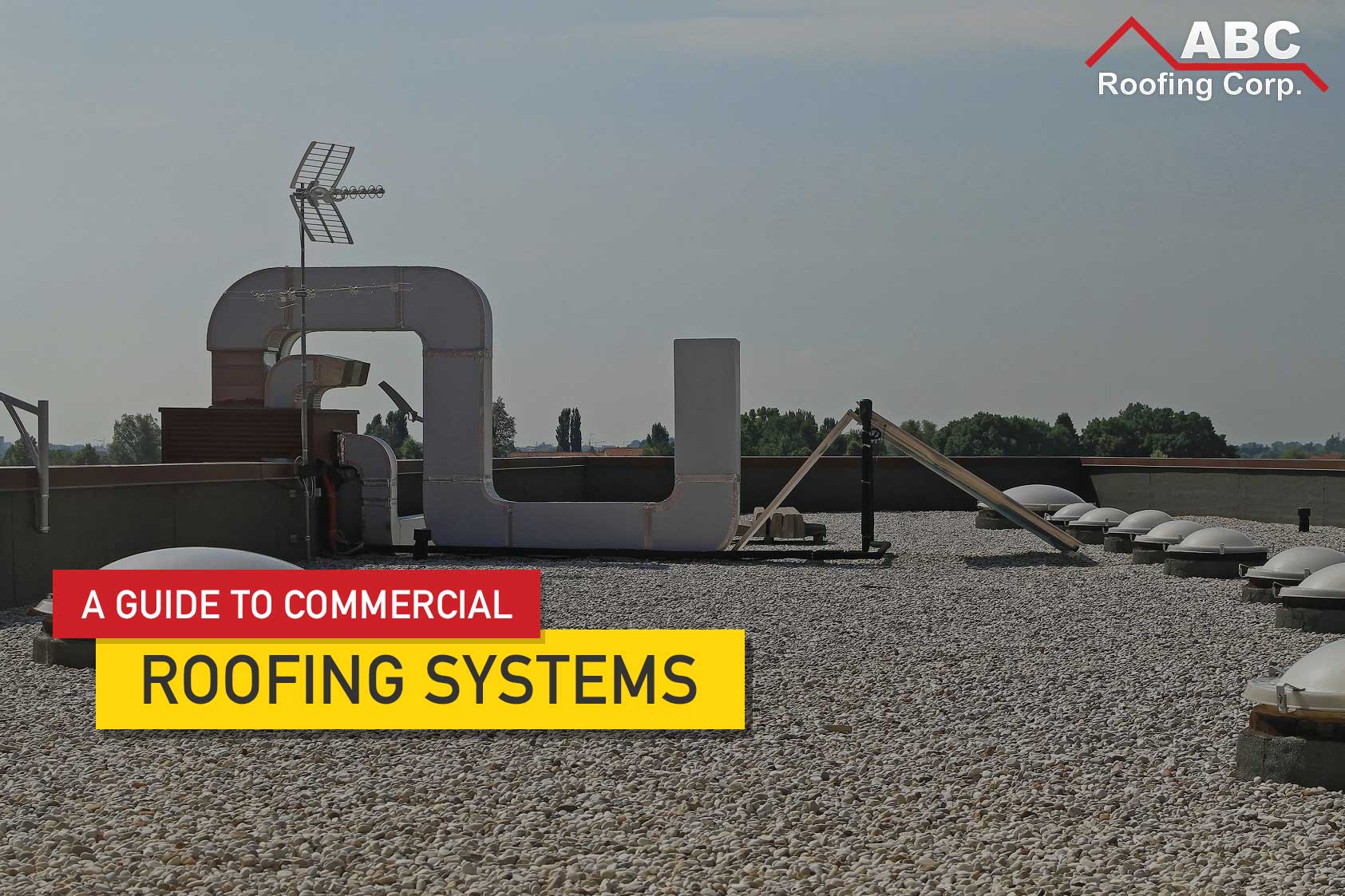
There is a common misconception that all roofs are created equal when in reality there are a number of considerations that go into choosing the correct roof installation for your business. Residential and commercial roofing systems both have to protect your property against the elements, but the way the achieve this differs. The most noticeable difference between commercial and residential roofing is the shape and size of the roof. Commercial roofs tend to be flat with only slight sloping because commercial buildings are bigger in size. At ABC Roofing, we understand that business owners do not have always have the time to decipher the wide range of roofing materials to find the perfect fit for their business.
Here is a guide to help you understand commercial roofing systems.
1. Built Up Roof Membranes (BUR)
BUR membranes have been used in the United States for over 100 years. BUR remains the roofing system of choice for many commercial buildings because they provide protection against UV radiation, fire, heat, and are resistant to damage from hail. BUR is a composite roofing system that is made up by alternating layers of bitumen and fabrics like felt as reinforcement. These layers of bitumen and fabric create the finished membrane and can be applied directly to roof decks or decks with installed insulation panels.
BUR is available in traditional or modified membranes. Traditional bitumen roofing systems typically use cold-applied adhesive, asphalt, or coal tar which is rarely used in South Florida re-roofing while modified bitumen systems are composed of multiple layers of polymer-modified membrane cap sheets with mechanically attached base sheet and remaining layers mopped with hot asphalt or torch applied simultaneously. BUR can be applied to various roofing surfaces and finished with these include mineral granules.
2. Spray Polyurethane Foam (SPF) Roofing Systems
SPF roofing systems are a modern roofing solution that can last over 50 years if installed and maintained correctly. It is applied by spraying a liquid onto the existing roof, the spray then expands into a foam and coats the surface. SPF can be applied directly onto a range of roofing surfaces making it a suitable commercial solution. The roofing system is renewable and environmentally friendly as it is made of materials like Free Form Chlorofluorocarbons (CFCS), Zero Ozone Depleting Potential (ODP) and Low in the Emission of Volatile Organic Compounds (VOCS).
3. Single-Ply Roofing
Single-ply roofing membranes are designed to be installed with one layer of application and can be fastened, glued, or installed directly over the roof insulation material. The membranes are UV radiation resistant, providing more protection than other products on the market.
Single-ply roofing is available in two categories, namely thermoset membranes and thermoplastic members. The biggest difference between the two is the material it is made of. Thermoset membranes are made of synthetic rubber making them water resistant and easy to install. Examples of thermoset membranes are Ethylene Propylene Diene Terpolymer (EPDM), Chlorosulfonated Polyethylene (CSPE) and Neoprene.
Thermoplastic membranes are made of plastic-based materials and are manufactured to include polyester or fiberglass for an additional reinforcement, making it a more stable and stronger system. The most common examples of thermoplastic membranes are thermoplastic polyolefin (TPO) and polyvinyl chloride (PVC).
Finding the roofing system that is best for your commercial roof can be difficult because the market is filled with a variety of options that each come with their own advantages and disadvantages. Hiring an experienced roofing contractor is the first step to making the right decision. At ABC roofing we have been exposed to the best and worst the industry has to offer and can provide our clients with practical and comprehensive support. Contact us today for all your commercial roofing needs.
